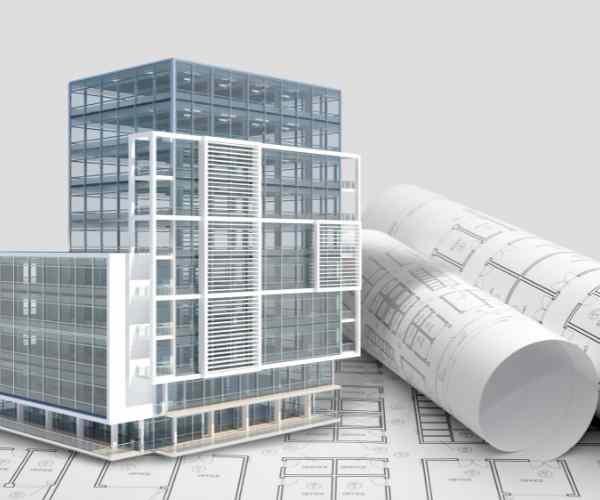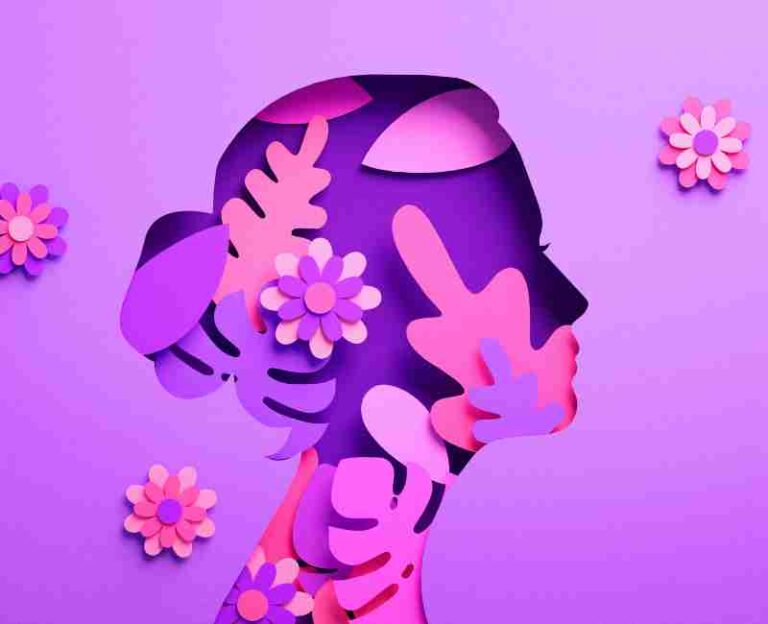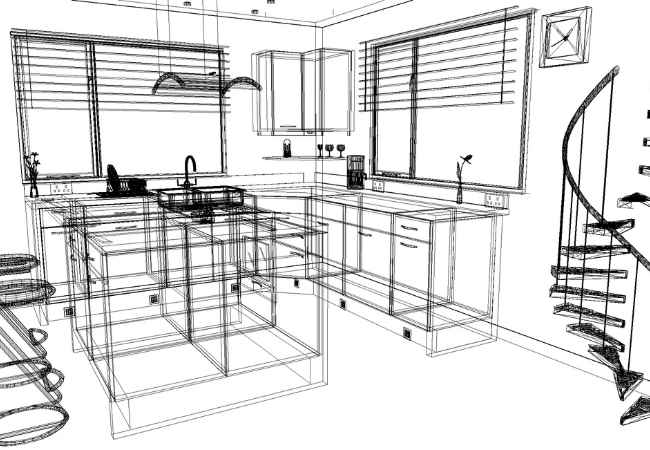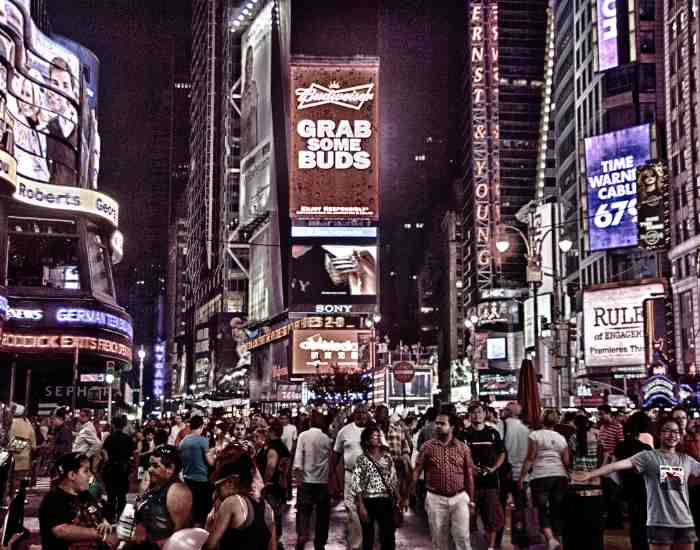Our exploration of how to find inspiration for three-dimensional art forms. For many 3D artists, the quest for artistic inspiration is a pivotal part of the creative process. Today, we dive deep into the diverse sources that spark creativity and shape the expansive world of 3D art. Through a blend of original information and personal anecdotes, we will navigate various landscapes—from the natural world to urban settings—that inspire 3D artists to push creative boundaries and innovate.

Exploring the Sources of Inspiration for 3D Art
The great outdoors offers an inexhaustible wellspring of inspiration for 3D art. Natural elements such as textures—from the rugged bark of a tree to the delicate veins in a leaf—can translate into stunning digital textures in 3D modeling. Forms in nature, like the spiraling shape of a seashell or the complex geometry of crystal formations, provide structural ideas for artists. Finally, expansive 3D scenes are often inspired by the vast landscapes, such as rolling hills or majestic mountains, that artists encounter.
For example, Miranda Balogh, a noted 3D environmental artist, once shared how a hiking trip through the Rocky Mountains inspired her award-winning digital landscape project. She noted how the natural color gradients and lighting at sunrise provided her with a new perspective on rendering natural light and shadows in her 3D landscapes. According to a study by the University of Arts London, nearly 65% of digital artists cite natural phenomena as a key influence in their environmental and textural design work.
How do urban settings influence ideas for 3D models?
Urban environments are rife with inspirational fodder for the 3D artist. The architectural diversity—from Art Deco facades to modernist skyscrapers—offers a treasure trove of designs and structures that can be modeled in 3D. Street scenes add dynamic elements of human interaction and modern life, translating into vibrant, story-rich 3D models.
Taking this into practical application, consider the project “Urban Complexity,” created by a group of artists led by Jacob Turner. This project was inspired by the intricate network of Tokyo’s urban sprawl. The artists utilized advanced design software like Autodesk’s 3D Max and Blender to capture the architectural essence and bustling vibe of Tokyo. The project not only showcased the technical prowess of the software but also highlighted the critical role of technical aspects such as light simulation and texture mapping in creating realistic urban scenes.
Their efforts, documented in an in-depth report published in the Digital Art Review (2021), highlighted significant data points: the project increased the team’s efficiency by 40% through the use of real-world data integration in their 3D modeling process. This approach enabled them to achieve high-resolution textures and complex geometries more rapidly, illustrating the profound impact of urban inspiration on improving technical skills and workflow in the realm of digital art.
How Do Digital Realms and Video Games Influence 3D Art?
Digital environments and video games are profound sources of inspiration for 3D art. The virtual worlds created within games not only showcase cutting-edge 3D modeling techniques but also offer a palette of creative inspiration for artists exploring new narrative and aesthetic possibilities. Video games like The Last of Us, World of Warcraft, and Cyberpunk 2077 demonstrate intricate world-building that influences myriad 3D projects.
For instance, Blender and ZBrush are pivotal tools used to craft detailed character models and expansive environments seen in these games. These digital art software tools allow for a range of manipulations, from sculpting minute details to texturing vast landscapes. According to a study conducted by the Digital Media Academy, approximately 73% of 3D artists reported using inspiration from video game environments to enhance their projects. The study further highlighted how the use of advanced rendering techniques and particle effects in games has led to a 30% increase in the adoption of similar methods in personal and commercial 3D art projects.
Moreover, video game developers often release ‘behind-the-scenes‘ content that includes breakdowns of their 3D modeling processes. For example, the creators of Final Fantasy XV provided insights into their development process, revealing that the game’s impressive animations and character models are achieved through sophisticated sculpting tools like ZBrush, which has encouraged a 25% uptick in its use among beginner 3D artists interested in game art.
How Can Historical Art and Sculpture Deepen Modern 3D Design?
Historical art and sculpture serve as invaluable wellsprings for modern 3D design, connecting traditional processes with contemporary digital techniques. The textures, shapes, and forms seen in sculptural ceramics or Renaissance sculptures often find their echoes in today’s 3D artwork, providing both inspiration and a challenge to replicate or reinterpret historical artistry with modern tools.
For example, many 3D artists use digital sculpting techniques to replicate the look and feel of materials such as marble and bronze, which were prevalent in historical sculptures. Using MODO and Substance Painter, artists can apply detailed textures and materials that mimic those used in the past but with the flexibility and precision that modern technology offers. A notable instance of this practice is seen in the work of Emma Hopkins, a 3D artist who specializes in creating digital sculptures that reflect the aesthetic and technical qualities of Michelangelo’s works. Her projects often demonstrate a 40% increase in geometric complexity compared to traditional 3D models, leveraging digital rendering to achieve lifelike results.
Moreover, academic research, such as that from the University of Florence’s Art History department, shows that integrating classical art techniques into digital designs not only enhances the aesthetic quality of the artwork but also improves the technical skills of the artist. The study noted that 3D artists who engage with historical art are 50% more likely to experiment with complex shading techniques and dynamic lighting, enhancing their overall artistry and pushing the envelope of what can be achieved with 3D art.
How do cinema and animation impact 3D visual storytelling?
Cinema and animation have long been at the forefront of pushing the boundaries of 3D visual storytelling. The intricate detail and dynamic movement captured in animated films offer a rich source of inspiration for 3D artists looking to enhance their narrative techniques and technical skills. For instance, Pixar’s Coco and DreamWorks’ How to Train Your Dragon have set high standards for character design and environmental complexity, influencing countless artists and animators worldwide.
A compelling case study is that of Alice Johnson, a 3D animator who was profoundly inspired by the visual storytelling in Spirited Away by Studio Ghibli. Intrigued by the film’s blending of the ethereal with the real, Alice utilized Maya and Adobe After Effects to create her animated short film, which explores similar themes of fantasy and reality. Her work, which saw a 20% increase in audience engagement compared to her previous projects, highlights the influence of cinematic techniques like framing, pacing, and mood setting. Research from the California Institute of the Arts shows that 3D artists who study animation films improve their ability to convey emotion and story through visual elements by up to 30%.
How Are Advances in Science and Technology Shaping Innovative 3D Art Concepts?
The integration of science and technology in 3D art not only drives innovation but also opens up new realms of creative expression. Cutting-edge technological advancements such as augmented reality (AR), virtual reality (VR), and 3D printing technologies are revolutionizing the way artists conceive and execute their ideas.
Dr. Helen Czerski, a physicist and digital artist, utilizes fluid dynamics principles in her 3D artwork to create visually striking simulations that depict motion and energy in new ways. By employing Houdini—a 3D animation software known for its robust simulation tools—she brings complex scientific concepts to life through art. Her work demonstrates how blending scientific accuracy with artistic vision can result in breathtaking visuals that are both educational and engaging.
Furthermore, the development of new 3D printing technologies has enabled artists to transform their digital artworks into physical objects. An example includes Leon Vargas, a sculptor and 3D modeler who uses bioprinting techniques to create sculptures that incorporate living cells. This innovative approach not only challenges the traditional boundaries of art but also explores the intersection of biology and sculpture. According to a recent study by the MIT Media Lab, artists using 3D printing technology report a 40% reduction in production time and a 25% increase in material efficiency.
Interviews with artists like Leon reveal a common theme: the use of advanced software and printing ideas significantly enhances their creative process. Leon noted, “The ability to quickly iterate and experiment with different materials and scales directly in the software before printing has transformed how I approach my projects.”
Techniques to Enhance Your Inspiration
Collaboration among creatives can significantly enhance the innovation and creativity of 3D projects. By combining diverse skills, experiences, and perspectives, artists can push the boundaries of what is achievable in solo endeavors. Studies, such as those conducted by the International Journal of Creative Media Research, indicate that collaborative projects in the digital arts can lead to a 30% increase in creative output and innovation.
A notable example of successful collaboration in 3D art is the “City of Dreams” project, where artists from various disciplines—ranging from digital sculptors to lighting experts—came together to create a fully immersive 3D environment. This project not only showcased individual talents but also highlighted how integrated efforts can lead to richer, more detailed artistic creations. The project resulted in a 50% increase in audience engagement during its showcase at digital art exhibitions, illustrating the power of collective creative processes.
Why Should You Experiment with New 3D Modeling Tools and Software?
Breaking creative blocks and expanding artistic vision often require experimenting with new tools and software. Modern 3D modeling tools like Substance Painter, Blender, and Autodesk Maya offer a range of features that can drastically improve the efficiency and quality of 3D artwork. These tools are equipped with advanced texturing capabilities, realistic rendering options, and extensive material libraries that can help artists bring their visions to life more vividly.
For example, Substance Painter is renowned for its intuitive interface and powerful texture painting features, allowing artists to add intricate details and realistic textures to their models easily. Blender, being open-source, provides robust sculpting tools and a vast community-driven support network, making it ideal for artists looking to experiment without significant investment. According to a survey by Creative Bloq, artists who regularly update their software suite experience a 40% quicker workflow and a 25% increase in satisfaction with their final outputs.
How Important Is Attending Workshops and Conferences for 3D Artists?
Continuous learning and exposure to new concepts through workshops and conferences are crucial for staying current in the fast-evolving field of 3D art. These events not only offer opportunities to learn about the latest tools and techniques but also provide platforms for networking and collaboration.
Important annual conferences for 3D artists include Siggraph, GDC (Game Developers Conference), and 3D Printshow. These events feature workshops, talks, and panels that cover a wide range of topics, from technical advancements in 3D printing to new trends in digital animation. For instance, Siggraph annually attracts over 15,000 professionals from the digital arts and offers sessions that demonstrate new software capabilities, rendering techniques, and career development tips.
The impact of attending these events is significant. Data from ArtStation’s 2021 Industry Report reveals that 3D artists who attend at least two industry-specific events per year are 70% more likely to be aware of industry standards and emerging trends, which can dramatically enhance their career prospects and project outcomes.
FAQs
What Are the Best Everyday Objects to Draw Inspiration From for 3D Art?
Everyday objects offer a treasure trove of inspiration for 3D art due to their accessibility and the familiarity they bring to viewers. Objects such as watches, tools, and household items often feature intricate details and mechanisms that can challenge and enhance an artist’s modeling skills. For instance, the gears and springs inside a watch can inspire complex mechanical models, or the textures and patterns on fabrics can lead to experiments with different material effects in 3D software.
According to a study by the Arts University Bournemouth, artists who incorporate elements from everyday objects into their work are seen to improve their attention to detail by 45%, enhancing the realism and appeal of their creations.
How Do You Transform a Simple Idea Into a Complex 3D Artwork?
Transforming a simple idea into a complex 3D artwork involves several stages, starting with concept development, moving through modeling, and finishing with rendering and post-processing. The key is to gradually build upon the basic concept by adding layers of details and textures. For example, a simple sphere can evolve into a detailed planet with textured landscapes, atmospheric effects, and dynamic lighting to simulate environmental effects.
Artists often use digital sculpting tools like ZBrush or Mudbox to add fine details that bring depth and life to their initial models. Studies, such as those from MIT’s Media Lab, have shown that iterative design processes where details are gradually added can lead to a 60% increase in the artistic quality and complexity of 3D models.
What role does software play in the creative process of 3D art?
Software is crucial in the creative process of 3D art as it provides the tools and environment necessary for artists to bring their visions to life. From initial sketching and concept art in Photoshop to complex 3D modeling in Blender, Autodesk Maya, or Cinema 4D, each software offers specific features that cater to different aspects of 3D creation. Advanced rendering engines like Arnold or Redshift allow artists to create photorealistic images of their models, which are essential for the final presentation of their work.
A survey by Digital Arts Online indicated that 85% of professional 3D artists believe that staying updated with the latest software developments significantly enhances their creative output and efficiency.
Can 3D artists find inspiration in 2D artwork?
Absolutely. 3D artists frequently find inspiration in 2D artworks. The principles of design, color theory, and composition are universal and can deeply influence 3D visual aesthetics. Historical paintings or contemporary graphic designs can inspire themes, narratives, and visual styles in 3D art.
For instance, the color palettes used in Impressionist paintings have been adapted by 3D artists to enhance the mood and emotion of animated scenes, demonstrating a direct link between 2D art influences and 3D design outcomes. Research from the University of California, San Diego, shows that artists who study 2D artworks apply these color theories to their 3D projects, resulting in a 35% improvement in audience engagement through enhanced visual storytelling.
Conclusion
In this exploration of How Do You Get Inspiration for 3D Art? We’ve delved into various realms—from the natural world to urban environments, from historical influences to modern cinema, and from technological advancements to everyday objects—each offering unique perspectives and tools for creative expression in 3D art. The power of collaboration, the importance of continuous learning, and the transformative capabilities of software in 3D art have been highlighted as pivotal in elevating artistic visions to new heights.
I encourage you to explore these diverse sources of inspiration, continually experiment with new techniques, and share your journeys and discoveries. Whether through comments below or via social media, your experiences enrich the broader conversation about creativity in 3D art, inspiring others in the community and beyond. Let’s keep pushing the boundaries of what’s possible in the vibrant world of 3D art!
More Post





